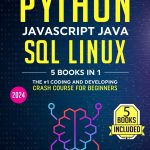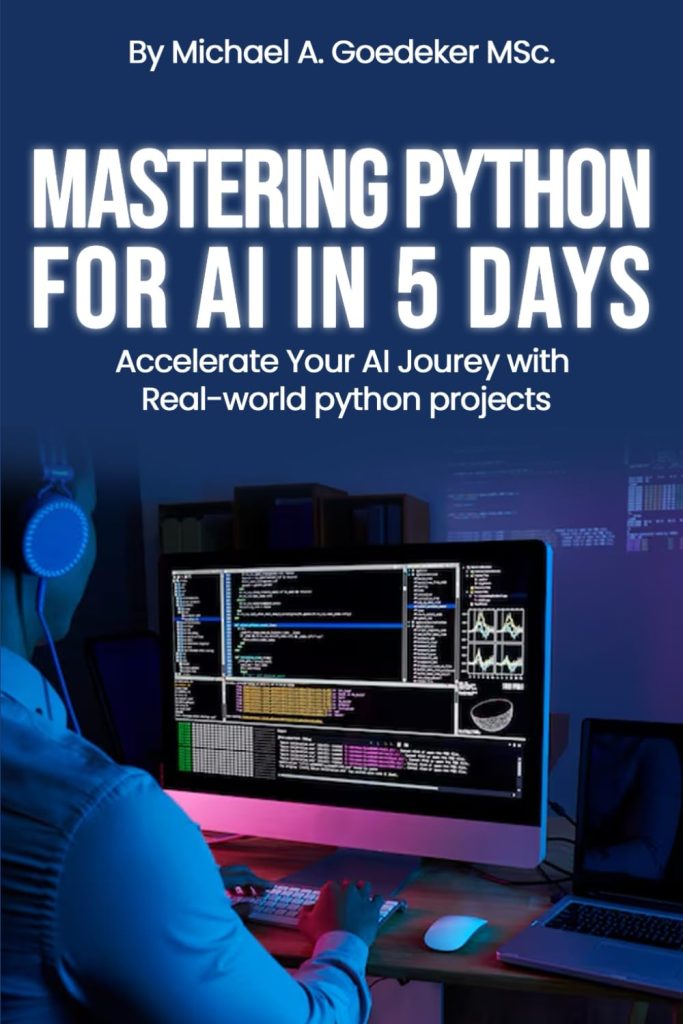
Classification is a fundamental task in machine learning where the goal is to predict the category or class of an input based on its features. It involves assigning predefined labels to new, unseen data points based on patterns learned from a labeled training dataset.
In classification problems, we typically have:
- The attributes or characteristics of the data points
- The predefined categories or classes
- A set of labeled examples used to train the model
- Unseen data used to evaluate the model’s performance
Classification algorithms can be broadly categorized into two types:
- Predicting one of two possible classes (e.g., spam or not spam)
- Predicting one of three or more possible classes (e.g., classifying images of different animal species)
A simple example of a classification problem is determining whether an email is spam or not spam based on its content and metadata. Let’s look at a basic Python representation of such a problem:
# Sample email data
emails = [
{"content": "Buy now! Limited offer!", "sender": "unknown@example.com", "is_spam": True},
{"content": "Meeting at 3 PM tomorrow", "sender": "colleague@company.com", "is_spam": False},
{"content": "You've won a prize!", "sender": "lottery@winner.com", "is_spam": True},
{"content": "Project update: deadline extended", "sender": "manager@company.com", "is_spam": False}
]
# Extract features and labels
X = [(email["content"], email["sender"]) for email in emails]
y = [email["is_spam"] for email in emails]
# Print features and labels
for features, label in zip(X, y):
print(f"Content: {features[0]}")
print(f"Sender: {features[1]}")
print(f"Is Spam: {label}")
print()
In this example, the features are the email content and sender, while the label is whether the email is spam or not. A classification algorithm would learn from this data to predict whether new, unseen emails are spam or not spam.
Classification algorithms work by learning decision boundaries or probability distributions that separate different classes in the feature space. These algorithms can range from simple linear models to complex ensemble methods, each with its own strengths and weaknesses depending on the nature of the data and the specific problem at hand.
Some common applications of classification include:
- Sentiment analysis (positive, negative, or neutral)
- Medical diagnosis (diseased or healthy)
- Credit scoring (approve or deny)
- Image recognition (identifying objects in images)
- Fraud detection (legitimate or fraudulent transactions)
As we delve deeper into classification algorithms in scikit-learn, we’ll explore various techniques for building, training, and evaluating classification models to solve real-world problems effectively.
Overview of scikit-learn
Scikit-learn is a powerful and widely-used machine learning library for Python. It provides a comprehensive set of tools for data preprocessing, feature selection, model training, evaluation, and deployment. The library is built on top of NumPy, SciPy, and matplotlib, making it highly efficient and well-integrated with the scientific Python ecosystem.
Key features of scikit-learn include:
- A consistent and simple to operate API across different algorithms
- Extensive documentation and examples
- Efficient implementation of many machine learning algorithms
- Tools for data preprocessing and feature engineering
- Model selection and evaluation utilities
To get started with scikit-learn, you first need to install it. You can do this using pip:
pip install scikit-learn
Once installed, you can import scikit-learn modules in your Python scripts. Here’s a basic example of how to use scikit-learn for a simple classification task:
from sklearn.datasets import load_iris
from sklearn.model_selection import train_test_split
from sklearn.neighbors import KNeighborsClassifier
from sklearn.metrics import accuracy_score
# Load the Iris dataset
iris = load_iris()
X, y = iris.data, iris.target
# Split the data into training and testing sets
X_train, X_test, y_train, y_test = train_test_split(X, y, test_size=0.3, random_state=42)
# Create and train the model
knn = KNeighborsClassifier(n_neighbors=3)
knn.fit(X_train, y_train)
# Make predictions on the test set
y_pred = knn.predict(X_test)
# Calculate the accuracy
accuracy = accuracy_score(y_test, y_pred)
print(f"Accuracy: {accuracy:.2f}")
This example demonstrates the typical workflow when using scikit-learn:
- Import necessary modules
- Load or prepare your dataset
- Split the data into training and testing sets
- Create and train a model
- Make predictions on new data
- Evaluate the model’s performance
Scikit-learn provides a wide range of classification algorithms, including:
- Logistic Regression
- Support Vector Machines (SVM)
- Decision Trees
- Random Forests
- k-Nearest Neighbors (k-NN)
- Naive Bayes
- Gradient Boosting (e.g., XGBoost, LightGBM)
Each of these algorithms can be easily implemented using scikit-learn’s consistent API. For example, to use a Support Vector Machine instead of k-NN in the previous example, you would simply change the classifier:
from sklearn.svm import SVC svm = SVC(kernel='rbf', C=1.0) svm.fit(X_train, y_train) y_pred = svm.predict(X_test)
Scikit-learn also provides tools for hyperparameter tuning, such as GridSearchCV and RandomizedSearchCV, which help you find the best parameters for your model:
from sklearn.model_selection import GridSearchCV
param_grid = {'C': [0.1, 1, 10], 'kernel': ['rbf', 'linear']}
grid_search = GridSearchCV(SVC(), param_grid, cv=5)
grid_search.fit(X_train, y_train)
print(f"Best parameters: {grid_search.best_params_}")
print(f"Best score: {grid_search.best_score_:.2f}")
This flexibility and ease of use make scikit-learn an excellent choice for both beginners and experienced data scientists working on classification problems.
Common Classification Algorithms
Classification algorithms are the core of many machine learning tasks, and scikit-learn offers a wide range of options to choose from. Let’s explore some of the most common classification algorithms available in scikit-learn:
1. Logistic Regression
Logistic Regression is a simple yet powerful algorithm for binary classification. It models the probability of an instance belonging to a particular class.
from sklearn.linear_model import LogisticRegression
from sklearn.datasets import make_classification
from sklearn.model_selection import train_test_split
# Create a sample dataset
X, y = make_classification(n_samples=1000, n_features=20, n_classes=2, random_state=42)
# Split the data
X_train, X_test, y_train, y_test = train_test_split(X, y, test_size=0.2, random_state=42)
# Create and train the model
lr_model = LogisticRegression()
lr_model.fit(X_train, y_train)
# Make predictions
y_pred = lr_model.predict(X_test)
print(f"Accuracy: {lr_model.score(X_test, y_test):.2f}")
2. Support Vector Machines (SVM)
SVMs are powerful for both linear and non-linear classification. They work by finding the hyperplane that best separates the classes in the feature space.
from sklearn.svm import SVC
# Create and train the SVM model
svm_model = SVC(kernel='rbf', C=1.0)
svm_model.fit(X_train, y_train)
# Make predictions
y_pred = svm_model.predict(X_test)
print(f"Accuracy: {svm_model.score(X_test, y_test):.2f}")
3. Decision Trees
Decision Trees are intuitive and easy to interpret. They make decisions based on a series of questions about the features.
from sklearn.tree import DecisionTreeClassifier
# Create and train the Decision Tree model
dt_model = DecisionTreeClassifier(max_depth=5)
dt_model.fit(X_train, y_train)
# Make predictions
y_pred = dt_model.predict(X_test)
print(f"Accuracy: {dt_model.score(X_test, y_test):.2f}")
4. Random Forests
Random Forests are an ensemble method that combines multiple decision trees to create a more robust and accurate model.
from sklearn.ensemble import RandomForestClassifier
# Create and train the Random Forest model
rf_model = RandomForestClassifier(n_estimators=100, random_state=42)
rf_model.fit(X_train, y_train)
# Make predictions
y_pred = rf_model.predict(X_test)
print(f"Accuracy: {rf_model.score(X_test, y_test):.2f}")
5. k-Nearest Neighbors (k-NN)
k-NN is a simple, instance-based learning algorithm that classifies new instances based on the majority class of their k nearest neighbors in the feature space.
from sklearn.neighbors import KNeighborsClassifier
# Create and train the k-NN model
knn_model = KNeighborsClassifier(n_neighbors=5)
knn_model.fit(X_train, y_train)
# Make predictions
y_pred = knn_model.predict(X_test)
print(f"Accuracy: {knn_model.score(X_test, y_test):.2f}")
6. Naive Bayes
Naive Bayes classifiers are based on applying Bayes’ theorem with strong independence assumptions between the features. They’re particularly useful for text classification tasks.
from sklearn.naive_bayes import GaussianNB
# Create and train the Naive Bayes model
nb_model = GaussianNB()
nb_model.fit(X_train, y_train)
# Make predictions
y_pred = nb_model.predict(X_test)
print(f"Accuracy: {nb_model.score(X_test, y_test):.2f}")
7. Gradient Boosting
Gradient Boosting methods, such as XGBoost and LightGBM, are powerful ensemble techniques that build a series of weak learners to create a strong classifier.
from sklearn.ensemble import GradientBoostingClassifier
# Create and train the Gradient Boosting model
gb_model = GradientBoostingClassifier(n_estimators=100, learning_rate=0.1, random_state=42)
gb_model.fit(X_train, y_train)
# Make predictions
y_pred = gb_model.predict(X_test)
print(f"Accuracy: {gb_model.score(X_test, y_test):.2f}")
Each of these algorithms has its strengths and weaknesses, and their performance can vary depending on the specific characteristics of your dataset. It’s often a good practice to try multiple algorithms and compare their performance to find the best one for your particular problem.
Implementation of Classification Algorithms in scikit-learn
Now that we’ve explored common classification algorithms, let’s dive into their implementation using scikit-learn. We’ll use a real-world dataset to show how to apply these algorithms in practice.
For this example, we’ll use the famous Iris dataset, which is included in scikit-learn. First, let’s load and prepare the data:
from sklearn.datasets import load_iris from sklearn.model_selection import train_test_split from sklearn.preprocessing import StandardScaler # Load the Iris dataset iris = load_iris() X, y = iris.data, iris.target # Split the data into training and testing sets X_train, X_test, y_train, y_test = train_test_split(X, y, test_size=0.3, random_state=42) # Scale the features scaler = StandardScaler() X_train_scaled = scaler.fit_transform(X_train) X_test_scaled = scaler.transform(X_test)
Now, let’s implement and compare several classification algorithms:
1. Logistic Regression
from sklearn.linear_model import LogisticRegression
from sklearn.metrics import accuracy_score, classification_report
lr_model = LogisticRegression(random_state=42)
lr_model.fit(X_train_scaled, y_train)
lr_pred = lr_model.predict(X_test_scaled)
print("Logistic Regression:")
print(f"Accuracy: {accuracy_score(y_test, lr_pred):.2f}")
print(classification_report(y_test, lr_pred))
2. Support Vector Machine (SVM)
from sklearn.svm import SVC
svm_model = SVC(kernel='rbf', random_state=42)
svm_model.fit(X_train_scaled, y_train)
svm_pred = svm_model.predict(X_test_scaled)
print("Support Vector Machine:")
print(f"Accuracy: {accuracy_score(y_test, svm_pred):.2f}")
print(classification_report(y_test, svm_pred))
3. Random Forest
from sklearn.ensemble import RandomForestClassifier
rf_model = RandomForestClassifier(n_estimators=100, random_state=42)
rf_model.fit(X_train_scaled, y_train)
rf_pred = rf_model.predict(X_test_scaled)
print("Random Forest:")
print(f"Accuracy: {accuracy_score(y_test, rf_pred):.2f}")
print(classification_report(y_test, rf_pred))
4. k-Nearest Neighbors (k-NN)
from sklearn.neighbors import KNeighborsClassifier
knn_model = KNeighborsClassifier(n_neighbors=3)
knn_model.fit(X_train_scaled, y_train)
knn_pred = knn_model.predict(X_test_scaled)
print("k-Nearest Neighbors:")
print(f"Accuracy: {accuracy_score(y_test, knn_pred):.2f}")
print(classification_report(y_test, knn_pred))
To improve the performance of our models, we can use scikit-learn’s built-in hyperparameter tuning tools. Let’s demonstrate this using GridSearchCV with the SVM model:
from sklearn.model_selection import GridSearchCV
param_grid = {
'C': [0.1, 1, 10],
'kernel': ['rbf', 'linear'],
'gamma': ['scale', 'auto', 0.1, 1]
}
grid_search = GridSearchCV(SVC(), param_grid, cv=5, n_jobs=-1)
grid_search.fit(X_train_scaled, y_train)
print("Best parameters:", grid_search.best_params_)
print("Best cross-validation score:", grid_search.best_score_)
best_svm_model = grid_search.best_estimator_
best_svm_pred = best_svm_model.predict(X_test_scaled)
print("Optimized SVM:")
print(f"Accuracy: {accuracy_score(y_test, best_svm_pred):.2f}")
print(classification_report(y_test, best_svm_pred))
Finally, let’s create a simple function to compare the performance of all our models:
def compare_models(models, X_train, X_test, y_train, y_test):
results = []
for name, model in models.items():
model.fit(X_train, y_train)
y_pred = model.predict(X_test)
accuracy = accuracy_score(y_test, y_pred)
results.append((name, accuracy))
results.sort(key=lambda x: x[1], reverse=True)
print("Model Comparison:")
for name, accuracy in results:
print(f"{name}: {accuracy:.2f}")
models = {
"Logistic Regression": lr_model,
"SVM": svm_model,
"Random Forest": rf_model,
"k-NN": knn_model,
"Optimized SVM": best_svm_model
}
compare_models(models, X_train_scaled, X_test_scaled, y_train, y_test)
This implementation demonstrates how to use various classification algorithms in scikit-learn, including data preprocessing, model training, prediction, and evaluation. It also shows how to perform hyperparameter tuning using GridSearchCV and how to compare the performance of different models.
Remember that the choice of algorithm and its performance can vary depending on the specific dataset and problem you are working on. It’s always a good practice to try multiple algorithms and tune their hyperparameters to find the best solution for your particular classification task.
Evaluation and Comparison of Classification Algorithms
When working with classification algorithms, it’s essential to evaluate and compare their performance to choose the best model for your specific problem. Scikit-learn provides various tools and metrics for this purpose. Let’s explore some common evaluation techniques and how to implement them.
1. Accuracy Score
Accuracy is the simplest metric, measuring the proportion of correct predictions among the total number of cases examined.
from sklearn.metrics import accuracy_score
y_pred = model.predict(X_test)
accuracy = accuracy_score(y_test, y_pred)
print(f"Accuracy: {accuracy:.2f}")
2. Classification Report
The classification report provides a comprehensive summary of various metrics, including precision, recall, and F1-score for each class.
from sklearn.metrics import classification_report report = classification_report(y_test, y_pred) print(report)
3. Confusion Matrix
A confusion matrix gives a tabular summary of the model’s performance, showing the number of correct and incorrect predictions for each class.
from sklearn.metrics import confusion_matrix
import seaborn as sns
import matplotlib.pyplot as plt
cm = confusion_matrix(y_test, y_pred)
sns.heatmap(cm, annot=True, fmt='d')
plt.xlabel('Predicted')
plt.ylabel('Actual')
plt.show()
4. ROC Curve and AUC
For binary classification problems, the Receiver Operating Characteristic (ROC) curve and Area Under the Curve (AUC) are useful for evaluating model performance.
from sklearn.metrics import roc_curve, auc
# Assuming binary classification
y_scores = model.predict_proba(X_test)[:, 1]
fpr, tpr, _ = roc_curve(y_test, y_scores)
roc_auc = auc(fpr, tpr)
plt.figure()
plt.plot(fpr, tpr, color='darkorange', lw=2, label=f'ROC curve (AUC = {roc_auc:.2f})')
plt.plot([0, 1], [0, 1], color='navy', lw=2, linestyle='--')
plt.xlim([0.0, 1.0])
plt.ylim([0.0, 1.05])
plt.xlabel('False Positive Rate')
plt.ylabel('True Positive Rate')
plt.title('Receiver Operating Characteristic (ROC) Curve')
plt.legend(loc="lower right")
plt.show()
5. Cross-Validation
Cross-validation helps assess how well a model generalizes to unseen data by splitting the dataset into multiple training and validation sets.
from sklearn.model_selection import cross_val_score
cv_scores = cross_val_score(model, X, y, cv=5)
print(f"Cross-validation scores: {cv_scores}")
print(f"Mean CV score: {cv_scores.mean():.2f} (+/- {cv_scores.std() * 2:.2f})")
6. Learning Curves
Learning curves help visualize how model performance changes as the training set size increases, which can help diagnose overfitting or underfitting.
from sklearn.model_selection import learning_curve
train_sizes, train_scores, test_scores = learning_curve(
model, X, y, cv=5, n_jobs=-1, train_sizes=np.linspace(0.1, 1.0, 10))
train_scores_mean = np.mean(train_scores, axis=1)
train_scores_std = np.std(train_scores, axis=1)
test_scores_mean = np.mean(test_scores, axis=1)
test_scores_std = np.std(test_scores, axis=1)
plt.figure()
plt.title("Learning Curves")
plt.xlabel("Training examples")
plt.ylabel("Score")
plt.grid()
plt.fill_between(train_sizes, train_scores_mean - train_scores_std,
train_scores_mean + train_scores_std, alpha=0.1, color="r")
plt.fill_between(train_sizes, test_scores_mean - test_scores_std,
test_scores_mean + test_scores_std, alpha=0.1, color="g")
plt.plot(train_sizes, train_scores_mean, 'o-', color="r", label="Training score")
plt.plot(train_sizes, test_scores_mean, 'o-', color="g", label="Cross-validation score")
plt.legend(loc="best")
plt.show()
7. Model Comparison
To compare multiple models, you can create a function that evaluates several classifiers and presents their performance metrics side by side.
from sklearn.model_selection import cross_val_score
from sklearn.linear_model import LogisticRegression
from sklearn.svm import SVC
from sklearn.ensemble import RandomForestClassifier
def compare_models(models, X, y):
results = []
for name, model in models.items():
cv_scores = cross_val_score(model, X, y, cv=5)
results.append((name, cv_scores.mean(), cv_scores.std()))
results.sort(key=lambda x: x[1], reverse=True)
print("Model Comparison:")
for name, mean_score, std_score in results:
print(f"{name}: {mean_score:.2f} (+/- {std_score * 2:.2f})")
models = {
"Logistic Regression": LogisticRegression(),
"SVM": SVC(),
"Random Forest": RandomForestClassifier()
}
compare_models(models, X, y)
When evaluating and comparing classification algorithms, it is important to ponder the specific requirements of your problem. Some factors to keep in mind include:
- The nature of your dataset (e.g., balanced or imbalanced classes)
- The importance of different types of errors (false positives vs. false negatives)
- The interpretability requirements of your model
- Computational resources and training time constraints
By using these evaluation techniques and considering the specific context of your problem, you can make informed decisions about which classification algorithm is best suited for your needs.






